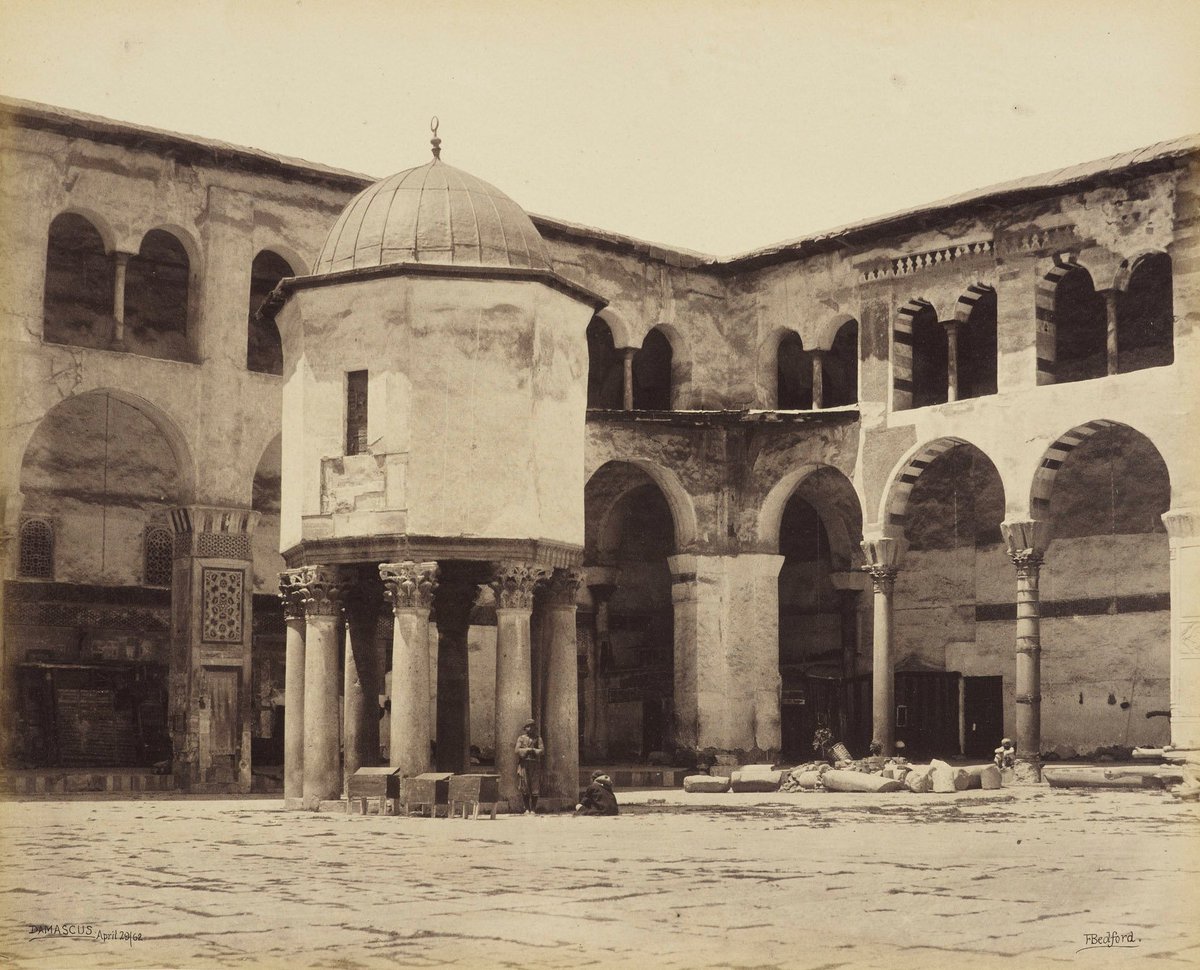
The 18th surah of the Qurʾan, al-Kahf, speaks of a figure named Ḏū l-Qarnayn, ‘the Two-Horned Man’. Who is he? Most modern historians contend that Ḏū l-Qarnayn is none other than Alexander 'the Great' of Macedon (Ἀλέξανδρος ὁ Μέγας, 356–323 BCE). This thread explains why… 



First, a word on sources: the modern historiography of the Alexander of history relies on one set of sources—such Diodorus Siculus (1st cent. BCE) and Plutarch (1st cent. CE)—but these are not the sources or precursors of the qurʾanic story …
… Alexander became more popularly known through romances, fictional narratives about Alexander, the most famous and popular of these being the romance of Pseudo-Callisthenes composed in the 3rd cent. CE, which was translated many ancient languages, including Syriac …
One of the most important Syriac adaptations of the Alexander Romance of Pseudo-Callisthenes ‘christianized’ Alexander, portraying him as a pious devotee of Christ; it was called “The Heroic Deeds of Alexander (Neṣḥānā d-Aleksandrōs).”
academia.edu/6461094/Alexan…
academia.edu/6461094/Alexan…
It is this stream of stories abt Alexander that finds purchase in the Qurʾan. Q. 18:83 begins with the Messenger being asked abt ‘Ḏū l-Qarnayn’ and he says, “I will recite to you an account (ذكرًا|ḏikran) of him.” The correspondences b/w the Syriac Nesḥānā + Q.18:83-102 r many
But let’s begin with his name: Ḏū l-Qarnayn|ذو القرنين. In an early scene of the Neṣḥānā, Alexander prostrates in worship (sgd|ܣܓܕ, ‘does a sajdah’) and prays to God, “You gave me horns on my head (ܐܣܓܝܬ ܠܝ ܩܪ̈ܢܬܐ ܪܫܝ|ʾsgyt ly qrntʾ b-ršy) to topple the kingdoms of the world.”
Imagery of Alexander having two horns is early and widespread. Lysimachus, the former general of Alexander, issued coins that portrayed Alexander with the ram’s horns of Zeus Ammon, whom Egyptian priests claimed was Alexander’s father. One even finds this iconography in Arabia... 



(1) Silver coin issued by Lysimachus (305-281 BCE)
(2) Arabian Abi'el-type Alexander imitative drachm (E Arabia, c.2nd cent BCE)
(3) Arabian Abi'el-type Alexander imitative tetradrachm (E Arabia, c. 1st cent BCE)
The 'pagan' connotations of the horns were discarded, reinterpreted
(2) Arabian Abi'el-type Alexander imitative drachm (E Arabia, c.2nd cent BCE)
(3) Arabian Abi'el-type Alexander imitative tetradrachm (E Arabia, c. 1st cent BCE)
The 'pagan' connotations of the horns were discarded, reinterpreted

But that’s just the beginning. Both the (more detailed) Neṣḥānā and the Qurʾan narrate 3 extraordinary journeys to:
1. fetid sea near where the sun sets and evildoers are punished;
2. where the sun rises and scorches people;
3. and where DQ builds a wall against Gog and Magog
1. fetid sea near where the sun sets and evildoers are punished;
2. where the sun rises and scorches people;
3. and where DQ builds a wall against Gog and Magog
My feed has been awash with discussions of the second journey, Q. 18:90 "When [Ḏū l-Qarnayn] came to the rising of the sun, he found it rising on a people for whom We had provided no shelter from it." The parallel passage (right) from the Neṣḥānā makes it far less cryptic. 



Parallel b/w Quran and Neṣḥānā are numerous and striking even on the level of the language used:
1) fetid spring/sea (عين حمئة|ʿayn ḥamiʾah = ܝܡܐ ܣܪܝܐ|yamā saryā)
2) punishment of evildoers (من ظلم|man ẓalama = ܥܒ̈ܕܝ ܒܝ̈ܫܬܐ|ʿabday bīšātā)
1) fetid spring/sea (عين حمئة|ʿayn ḥamiʾah = ܝܡܐ ܣܪܝܐ|yamā saryā)
2) punishment of evildoers (من ظلم|man ẓalama = ܥܒ̈ܕܝ ܒܝ̈ܫܬܐ|ʿabday bīšātā)
3) 18:99 “We shall let crash like waves against each other on that day (|wa=taraknā baʿḍahu yawmaʾiḏin yamūju fī baʿḍ|وتركنا بعضهم يومئذ يموج في بعض)”
“and kingdoms will fall one upon the other (ܘܝܦ̈ܠܢ ܡܠܟܘ̈ܬܐ ܚܕܐ ܥܠ ܚܕܐ|wa-nāplān malkwātā ḥdā ʿal ḥdā)”
“and kingdoms will fall one upon the other (ܘܝܦ̈ܠܢ ܡܠܟܘ̈ܬܐ ܚܕܐ ܥܠ ܚܕܐ|wa-nāplān malkwātā ḥdā ʿal ḥdā)”
The above examples by no means exhausts the topic. The classic study on this topic was written by Kevin van Bladel; see further:
academia.edu/33727330/van_B…
But also
jstor.org/stable/40379198
academia.edu/33727330/van_B…
But also
jstor.org/stable/40379198
The full text of the Nesḥānā, published and translated by E.A. Wallis Budge in 1889, can be read here: books.google.com/books?id=_14Lm…
On Alexander's horns:
jstor.org/stable/282906
jstor.org/stable/282906
• • •
Missing some Tweet in this thread? You can try to
force a refresh

















